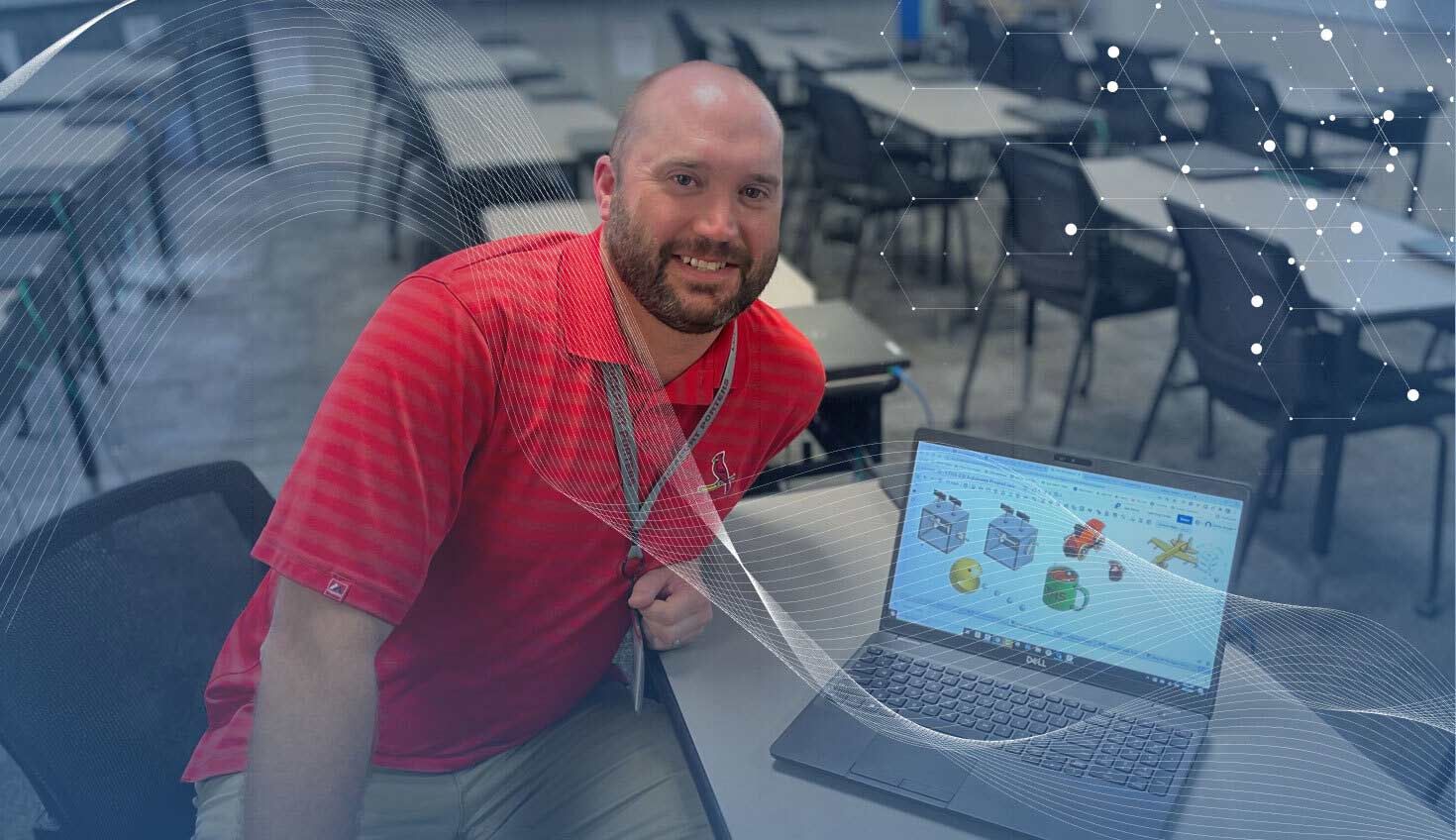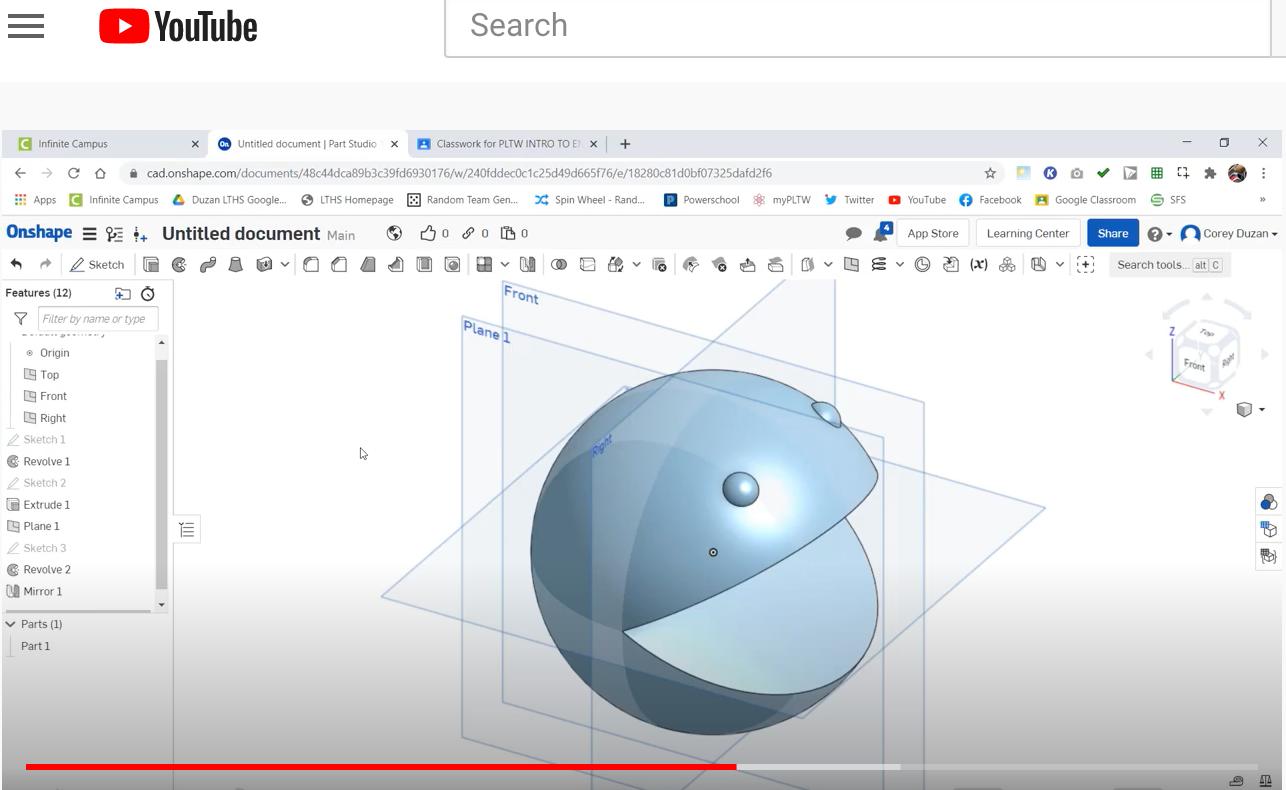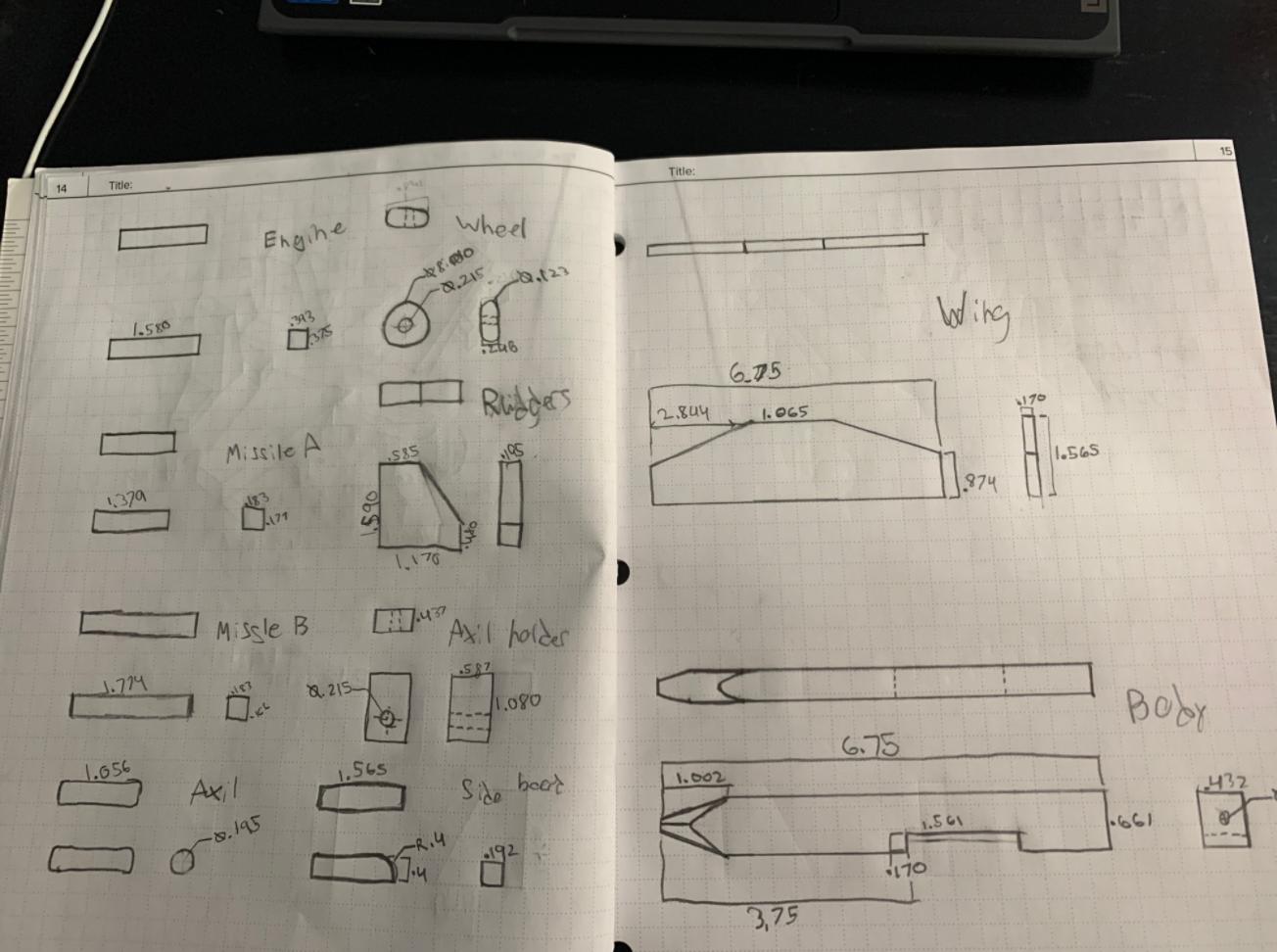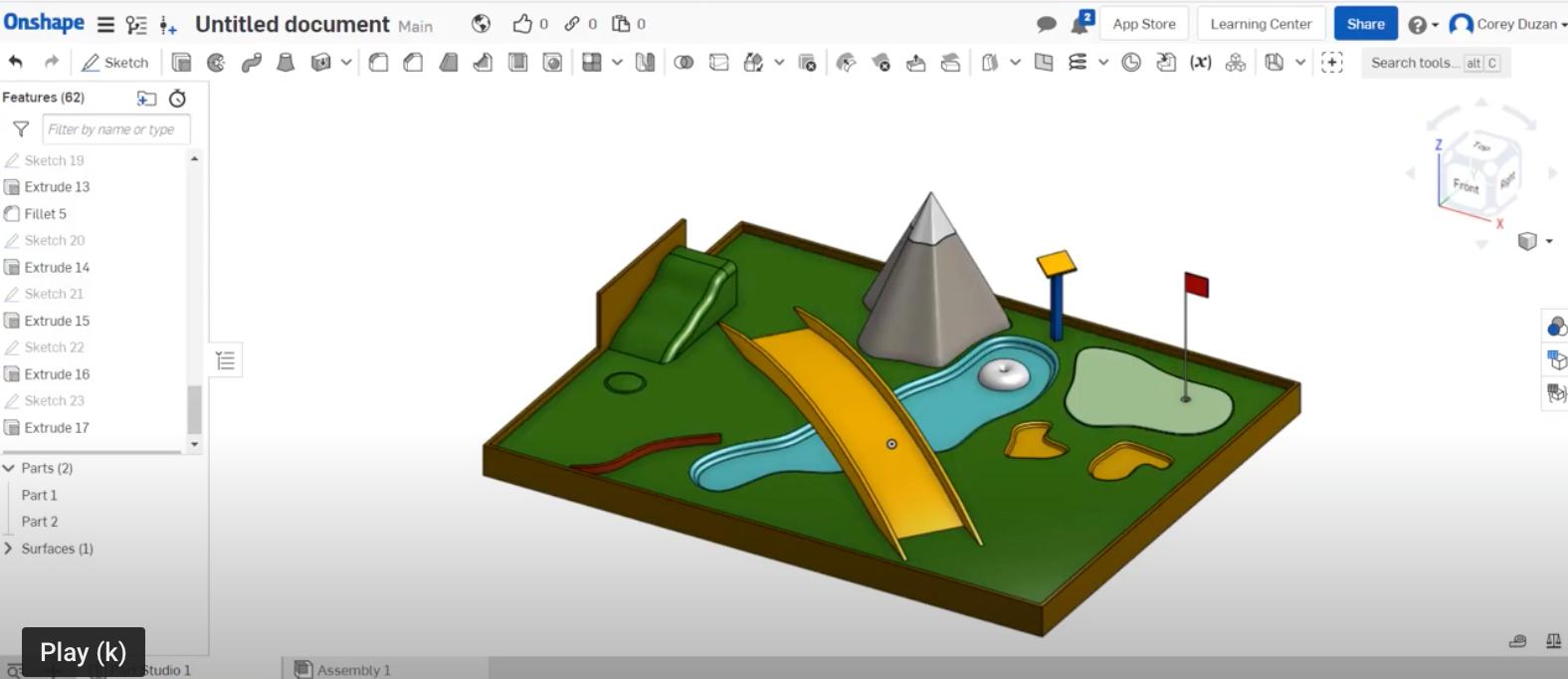
5:29
Teaching high school has been especially challenging since the start of the COVID-19 pandemic, but Corey Duzan sees a silver lining. The pandemic forced instructors to set aside traditional teaching methods and find ways to use technology to better engage students learning remotely.
“Set the textbook down. Set the Xerox copies of worksheets you’ve been using for 20 years down. Let’s try some new technology. Let’s try a new approach,” says Duzan, a Chicago-based engineering teacher. “I looked at this time as, ‘This is a new challenge. I can go out and try things I’ve always wanted to try.’ We’ve tried all sorts of new stuff, and it’s been fun.”
Fun is a word Duzan uses often when describing his career. He initially taught traditional design, drafting, CAD and electronics, but became frustrated when he realized that his graduating seniors pursuing university engineering programs were not fully prepared. Although they had taken the right science and math courses, most students didn’t know how to apply theories to engineering design. This realization prompted him to get involved with Project Lead the Way (PLTW), a U.S.-based nonprofit organization devoted to helping STEM teachers better prepare students for college and careers by exploring real-world challenges.
PLTW runs programs in more than 12,000 schools and has trained more than 77,000 teachers in all 50 states, Washington D.C., and U.S. territories.
Duzan trained in Introduction to Engineering Design (IED). “I thought I knew a lot when it came to design and CAD, and then my first training blew me away,” he recalls. “I had two really good Master Teachers. It became my goal to be ‘that guy’ training and supporting teachers.”
Duzan became a PLTW IED Master Teacher in 2014 and has been earning awards – both for his work teaching students and training teachers – ever since. Most recently, he won a 2019-2020 Outstanding Teacher Award with PLTW.
All of Project Lead The Way’s courses follow an APB approach: Activity, Project, and Problem-based learning. PLTW’s Engineering pathway culminates with a capstone class called “Engineering, Design and Development.”
“It’s basically ‘Shark Tank’ for high school students,” Duzan says. “Kids go out and identify and research problems. They build hands-on prototypes, get feedback from people and revamp their designs. In the end, they do a full-blown presentation with business people and college professors. It’s an unbelievable class. We’ve had kids walk away with patents from that process.”
Meeting the Remote Learning Challenge with Onshape

STEM educator Corey Duzan, a Master Teacher for Project Lead the Way, likes his high school students to choose fun design projects such as this 3D Pac-Man model.
For his Illinois high school STEM classes, Duzan relies on PTC’s Onshape, a cloud-based product development platform that combines a robust CAD system with built-in data management and real-time collaboration tools.
The educator first learned about Onshape from his brother, an engineer, a few years ago when he needed to teach a STEM exploration class – and he was skeptical. “The school had no computers to teach CAD, and he said, ‘They have Chromebooks.’ And I’m like, ‘Yeah, that’s not how CAD works,’” he recalls.
Duzan was surprised to discover Onshape could run on any computer, tablet, or phone (iOS or Android), including the school-issued laptops. Away from class, he evaluated cloud-based Onshape’s strengths versus the on-premise installed CAD system being used at his school.
“I thought, ‘Oh my gosh, Onshape has so many similarities to other CAD software packages we were used to in class.’ So when COVID hit, I knew exactly what to do. I knew I could have my kids signed up in five minutes and ready to go. We never skipped a beat.”
The free Onshape Education Plan requires no downloads or installation. As a Software-as-a-Service (SaaS) platform, upgrades are automatically added in the cloud every three weeks, requiring no IT support or downtime.
Duzan offers breezy conversational Onshape tutorials for teachers and students on his YouTube channel. He always provides a fun hook. “I was making videos on how to create Ring Pop candy using Onshape, and we were doing weird things that kids could find at home to model, like a Thanksgiving turkey.”
In the early days of the pandemic, Duzan quickly spread the word about Onshape to colleagues nationwide who were floundering during the sudden transition.
“There were a lot of teachers in my situation freaked out because they’d never heard of Onshape. I got the word out as quick as I could with Project Lead The Way. That really saved a lot of people, and there’s been a lot of teachers really happy they switched.”
Cloud-Based CAD Projects Keep Students Engaged

Before committing their ideas to CAD, students in Corey Duzan’s “Introduction to Engineering Design” class sketched their part designs the old fashioned way. Students used Onshape in a reverse engineering project in which they improved designs for toy helicopters, boats, cars and planes.
Duzan’s engineering design students, now learning in a hybrid setting, have been using Onshape for diverse CAD projects – including making birthday cookie cakes with toppings and candles of their own design and hot chocolate mug assemblies where they even create the hot chocolate and marshmallows in their 3D models.
The class has taken apart cheap wooden toys (jet fighters, helicopters, racecars, and sailboats) and reverse-engineered them using dial calipers. Sketching part designs in Onshape, they’ve made each virtual toy better than the original physical one.
“They’re adding color to it, making it more aerodynamic, putting logos on it, adding their own parts to it,” Duzan says. “The boys like to work on designs related to the military or sports, while the girls tend to gravitate toward pop culture themes.”
As part of a PLTW virtual design challenge, Duzan’s students also created their own miniature golf courses together using Onshape’s real-time collaboration features.

As a class project, in-person and remote students designed a miniature golf course together using Onshape’s real-time CAD collaboration tools.
“Kids were not just learning about the CAD features to create the parts. They were doing the assembly and design together. We were doing this in both a virtual setting and a hybrid setting,” he says.
“Kids were able to create this entire golf course in Onshape, and it was developing right in front of their faces. It was so much fun for me to watch,” Duzan adds. “I’ve been an Autodesk user my whole life, and no other CAD platform has that collaboration piece like Onshape.”
(Learn how your K-12 school or university can benefit from PTC’s free Onshape Education plan.)

Latest Content

- Case Study
- Industrial Equipment & Machine Design
Reframe Systems: Transforming Homebuilding with Digital Automation and Cloud-Native Onshape
09.25.2025 learn more
- Blog
- Becoming an Expert
- Assemblies
- Simulation
Mastering Kinematics: A Deeper Dive into Onshape Assemblies, Mates, and Simulation
12.11.2025 learn more
- Blog
- Evaluating Onshape
- Learning Center
AI in CAD: How Onshape Makes Intelligence Part of Your Daily Workflow
12.10.2025 learn more
- Blog
- Evaluating Onshape
- Assemblies
- Drawings
- Features
- Parts
- Sketches
- Branching & Merging
- Release Management
- Documents
- Collaboration
Onshape Explained: 17 Features That Define Cloud-Native CAD
12.05.2025 learn more



